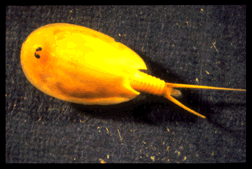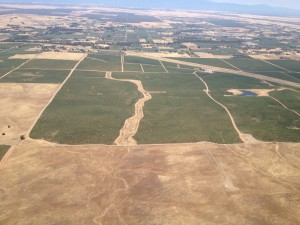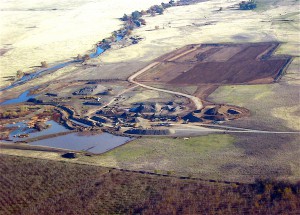WETLAND REGULATORY LAW
B. Demar Hooper has developed substantial depth of experience in land use matters requiring federal or state entitlements for impacts upon wetlands. He has practiced in this discipline since 1985. Before beginning his legal career, Demar Hooper served twelve years as an environmental analyst for the County of Sacramento, where he became very familiar with biological and hydrologic aspects of wetlands.
The following list is representative of the range of wetland matters for which the firm has provided assistance:
- Coordination of preparation of confidential wetland delineations;
- Advice with respect to removal or retention of farm ponds and other man-made water features;
- Analysis of federal and state jurisdiction over man-made water features, vernal pools and other isolated wetlands;
- Participating in “field hearings” with regulatory personnel for purposes of determining the extent of jurisdiction;
- Pre-application hearings for consideration of project impacts, and negotiation of terms and conditions for nationwide and individual permits;
- Preparation of Section 404(b)(1) Alternatives Analyses (Least Environmentally Damaging Practicable Alternative);
- Preparation and processing of applications for §404 individual permits; securing verification of compliance with terms and conditions of various nationwide permits;
- Preparation and processing of applications for Fish & Game Code §1603 Streambed Alteration Agreements;
- Assist in processing formal and informal consultations for incidental taking under the federal Endangered Species Act in conjunction with Section 404 permits;
- Negotiate settlement of §404 criminal prosecutions;
- Process administrative appeals of §404 jurisdictional determinations;
- Review and coordination of wetland mitigation plans following or conditional to issuance of permits;
- Representation of clients in matters involving §404 cease and desist orders and arrests pursuant to Fish and Game Code §1603.
- Processing of Prior Converted Cropland determinations through Natural Resources Conservation District and Corps of Engineers
In addition to the specific representation described above, Mr. Hooper has kept abreast of wetland regulatory developments such as assisting in drafting state and federal legislation regarding wetland mitigation banking and providing comments on state guidelines for mitigation banking. In particular, Mr. Hooper sponsored legislation on behalf of several northern California developers to enact a state procedure for establishing wetland mitigation banks. The legislation was approved and signed into law in 1993 as “The Sacramento – San-Joaquin Valley Wetland Mitigation Banking Act of 1993.” During its life as pending legislation, Mr. Hooper demonstrated his ability to build consensus among groups with divergent interests, address political agendas, provide effective testimony to policy committees, and resolve conflict over statute wording. Affected special interests included urban developers, mining interests, farmers, local governmental agencies, state resource protection agencies, and environmental special interest groups. Passage of the legislation led to development of one of California’s first privately sponsored wetland mitigation banks, Wildlands Mitigation Bank at Sheridan.
NATURAL RESOURCE REGULATORY LAW
Endangered Species

The following list is representative of the range of endangered species matters for which the firm has provided legal assistance:
- Negotiate formal and informal Section 7 Consultations and biological opinions for projects requiring federal action;
- Prepare, coordinate processing of, and facilitate with working groups investigating HCPs, NCCPs, and similar resource protection tools;
- Analyze legal arguments associated with species takings, and property takings pursuant to the U.S. Constitution 5th Amendment;
- Analyze and formally comment on public notices of candidacy for potential endangered and threatened species;
- Coordinate preparation of confidential special status plant and animal surveys;
- Advise regarding removal or retention of man-made water features potentially affecting endangered species habitat;
- Analyze federal and state endangered species acts jurisdiction over land disturbed by mining and man-made water features, vernal pools and other isolated wetlands.
- Process steelhead and salmon Essential Fish Habitat Assessments pursuant to the Magnuson-Stevens Act.
In addition to the specific representation described above, Mr. Hooper has kept abreast of regulatory developments by assisting in drafting state and federal legislation regarding endangered species wetland mitigation banking and providing comments on state guidelines for mitigation banking. In particular, Mr. Hooper assisted in drafting 1998 revisions to the California Endangered Species Act (CESA) and frequently consults with legislative staff on natural resource matters. Mr. Hooper has regulatory experience with the following Special Status Species:
Animals

Burrowing owl (Athene cunicularia hybugaea)
California freshwater shrimp (Syncaris pacifica)
California red-legged frog (Rana aurora draytonii)
California tiger salamander (Ambystoma californiense)
California Central Valley Steelhead (Oncorhynchus mykiss)
Chinook salmon (Oncorhynchus tshawytscha)
Conservancy fairy shrimp (Branchinecta conservatio)
Giant garter snake (Thamnopsis gigas)
San Joaquin kit fox (Vulpes macrotis mutica)
Swainson’s hawk (Buteo swainsoni)
Valley elderberry longhorn beetle (Desmocerus californicus dimorphus)
Vernal pool fairy shrimp (Branchinecta lynchi)
Vernal pool tadpole shrimp (Lepidurus packardi)
Western spadefoot toad (Scaphiopus hammondii)
Plants

Boggs Lake hedge-hyssop (Gratiola heterosepala)
Burke’s goldfields (Lasthenia burkei)
Butte County meadowfoam (Limnanthes floccosa ssp. californica)
El Dorado mule-ears (Wyethia reticulata)
Greene’s Legenere (Legenere limosa)
Pine Hill Ceanothus (Ceanothus roderickii)
Sacramento Orcutt grass (Orcuttia viscida)
Sanford’s arrowhead (Sagittaria sanfordii)
Stebbins’ morning glory (Calystegia stebbinsii)
Mining
As a subset of Natural Resource law, Demar Hooper has worked with mining
companies for his entire legal career. He also developed expertise in mining issues while working as an environmental analyst during the early years of implementing the California Surface Mining and Reclamation Act (SMARA). As an attorney, Mr. Hooper has worked with both hard rock and aggregate (sand and gravel) producers, and has performed the following tasks:
- Assisted in preparation of reclamation plans in satisfaction of SMARA;
- Analyzed mining operations regarding the need for reclamation plan amendment;
- Assisted property owners in forming business entity to prepare for aggregate mining;
- Analyzed existing mining operations regarding right to operate as legal non-conforming use;
- Advised mining clients regarding operational considerations associated with the Endangered Species Act and wetland features;
- Reviewed mining environmental documentation for legal sufficiency;
- Assisted in developing environmental mitigation for mining reclamation plans; and
- Analyzed environmental risks and benefits of aggregate mining in dredger tailings.
Agriculture
As a subset of Natural Resource law, Demar Hooper works with farmers and ranchers

addressing environmental issues shared by traditional development. While California and federal laws provide generous exemptions for many agricultural activities, those provisions seldom apply to initial conversions of undisturbed land to agriculture. Agricultural land clearing and soil ripping can trigger the need for federal Clean Water Act and Endangered Species Act permits, as well as California Fish and Game Code ß 1602 Streambed Alteration Agreement requirements. Mr. Hooper has assisted agricultural clients raising a wide variety of crops, including nut orchards, vineyards, olives, rice and cattle, in analyzing proposed agricultural operations. Advice and analysis included securing necessary approvals and designing and implementing agricultural improvements to avoid permit requirements.
